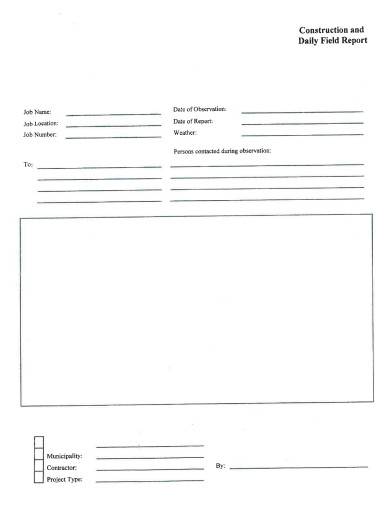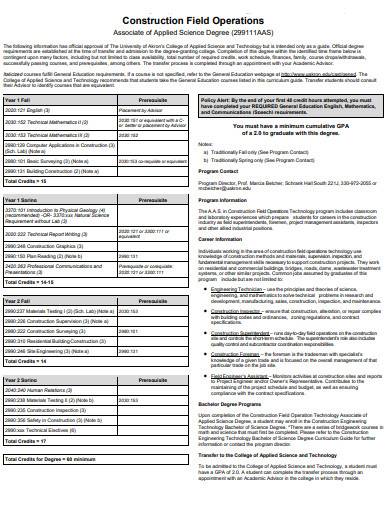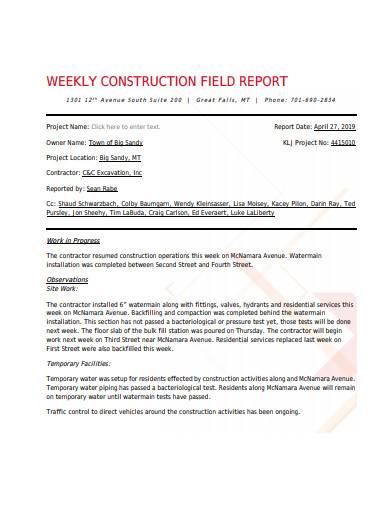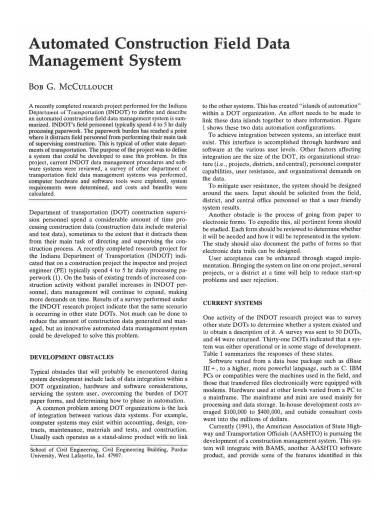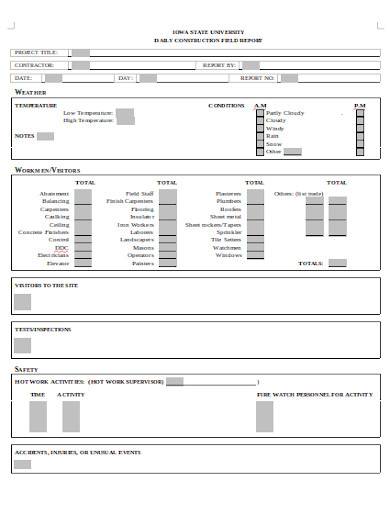Building infrastructure takes more than just blueprints and management plans; it requires the blood, sweat, and tears of you and your crew. This may sound like an exaggeration, but there’s a clear difference from work done behind a desk compared to work done with a jackhammer and mallet. However, despite these contradictions, these two aspects are both a necessity for the success of a project. After all, when fieldwork and experience combine with detailed documentation and recording, the result is a report that provides invaluable information to secure the building’s future.
Construction Field Report Template

What is a Construction Field Report?
The reality of all construction projects are that multiple associated entities create them. From the project proposal to deciding the location to even the blueprint drafting, more than one person is involved. Unfortunately, as business ventures will teach you if there are multiple people included, disagreements are bound to happen—this is where a construction field report comes in. This document is created by visiting the building site, observing the usual routine, inspecting equipment and other risk hazards, and then providing a detailed report to all VIPs in the project.
Now, you might be wondering why it’s necessary to go through all this hassle to write a straightforward report—after all, wouldn’t it be easier to draft your text on your table? In your air-conditioned office? The answer is blatantly apparent: you will lack perspective. The objective of any construction field report is to assess the progress of the infrastructure in real-time. This means that you need to be there to observe the challenges that lead to delays, risk of safety, and financial burdens.
Time for a Fieldtrip
Field reporting is not a unique commodity to news networks and sports channels as they’re also an essential aspect in managing a construction project, albeit differently. However, construction field reports haven’t always been the familiar folders and emails you know and are familiar with today. They’ve been around longer than people have realized.
Take a minute to think about an ancient structure; the great pyramids of Egypt? Perhaps the Roman Colosseum? How about the mighty Stonehenge? Now ask yourself, how did these architectural feats come to be? In the dates and ages where forklifts and mechanical cranes didn’t exist, how did ancient man learn to build like this? These civilizations had three things going for them: construction techniques like rammed earth, rope pulleys, and an incredible urge to be present throughout the entire process. Today, this ancient practice has gradually evolved into the progress reports and paperwork you’re familiar with. To provide you with even more convenience, here are a few sample templates for a Construction Field Report.
1. Construction and Daily Field Reports
2. Construction Field Operations Report
3. Post Construction Field Inspection Report
4. Weekly Construction Field Report
5. Automated Construction Field Data Management Report
6. Construction Daily Field Report Sample
7. Daily Construction Field Report
How to Create a Construction Field Report?
An effective construction field report does so much more than just provide information. This document also provides insight into the daily routine of your crew on-site, it tracks progress and challenges found on the entire project inspects the equipment used, and ensures the following of risk management. Hence, to create an effective report, here are a few tips and tricks.
1. Know What To Look For
The purpose of a construction field report is to take every observation you made on-site and transcribe that into a document. However, the term “field” is as vast in construction as it is in actuality. With that much area to scout and such particular details to look for, it isn’t surprising that people who don’t plan miss plenty of crucial, yet well-hidden features. As such, narrowing down you’re quarry before you track down anomalies saves you a lot of time and energy.
2. Set Your Objectives
Once you know what you’re looking for, then you start to walk around the property and find anything out of place. It’s also not a bad idea to talk to your crew and ask them about their take on the project. Is it safety protocols not being observed? Is the foundation too soft, which could lead to future building collapse? Are the heavy equipment and resources delayed, which could then lead to prolonging the completion date? As tempting as it is to create only a progress report and talk about everything that’s going according to plan, this is not what’s going to get you out of the bear trap. Avoid the risks beforehand—grab your pipe, magnifying glass, and deerstalker and start sleuthing around.
3. Observe Simple Writing
If you want your document to be relevant, avoid giving your readers an aneurysm from all the highfalutin words you used on your report. First, and foremost, is that you use simple text that gets your ideas across. Secondly, always maintain a veil of professionalism when addressing your readers. However, this doesn’t mean utilizing an unvaried format that’ll knock your readers out long before the half-way point. Much like drafting a contract agreement, finding the balance between simple text, a professional tone, and readability to avoid being monotonous is critical to writing a construction field report.
4. Summarize Your Data
In much the same way that walls of text produced unbridled rage in its readers, long strings of data are also an eyesore for most people to read. While data analysis is vital to creating a quality construction field report, do take note that the information you gathered still needs to be summarized. To put it in Layman’s terms, if you can summarize words and paragraphs, you can summarize calculations and data.
Construction field reports are so much more than just a document you submit out of requirement. They’re ancient techniques utilized by our ancestors to create some of the most breathtaking sights today. They’re used by construction companies to ensure the successful completion of infrastructure. Most importantly, however, they are a testament to humanity’s greatest strength; to evolve, adapt, and continually grow in much the same way as infrastructure has.
Related Posts
9+ Sample Quality Report
FREE 9+ Daily Report Sample
11+ Sample Fall Incident Report
6+ How to Create a Daily Construction Report
FREE 14+ Sample Project Status Reports
19+ Sample Construction Reports
31 Daily Log Templates
FREE 11+ Safety Audit Report Templates
11+ Sample Inspection Reports
9+ Field Engineer Job Description Sample
FREE 17+ Sample Visit Reports
FREE 5+ Sample Construction Work Order Forms
FREE 14+ Construction Safety Plan Template
59+ Incident Report Formats
16+ Sample Project Management Reports

